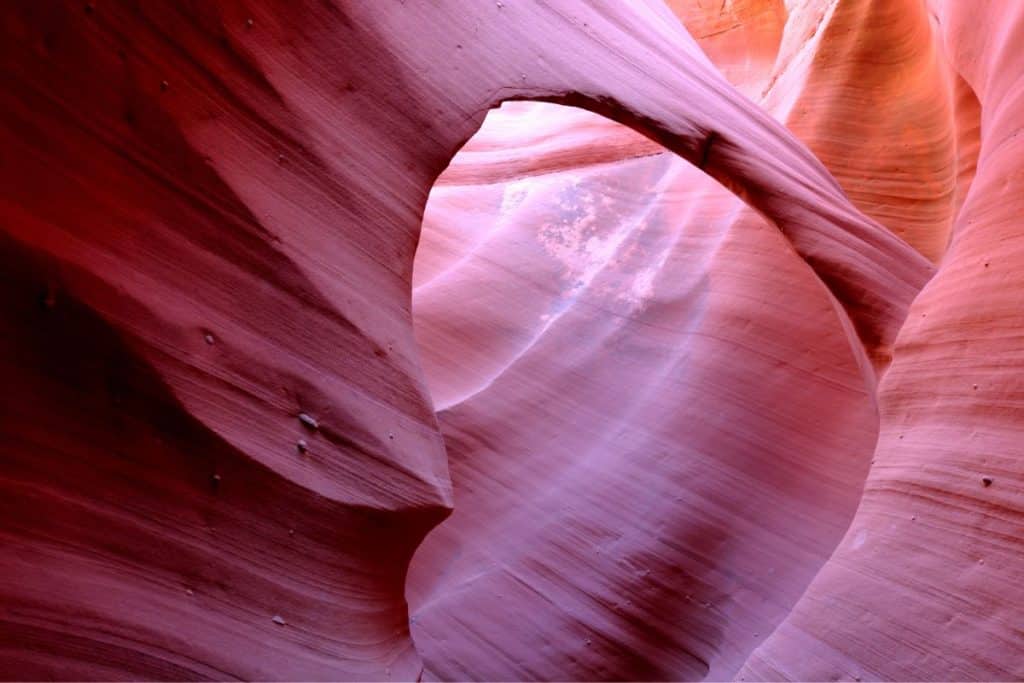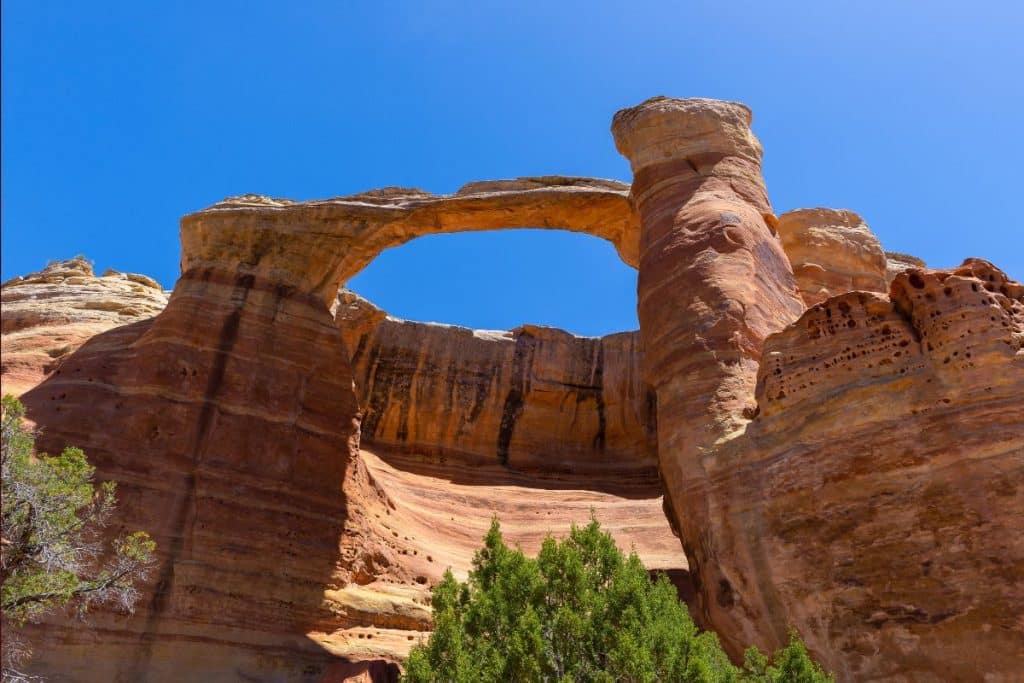Utah probably comes to mind when you think of towering arches carved out of red rock.
A lesser-known but no less impressive site is in Colorado, just across the border: 35 natural arches are hidden in a canyon in a 123,400-acre nature preserve.
Most people are unaware of these arches, which are the second-highest concentration of arches in the entire world.
The towering rock structures known as the Rattlesnake Canyon Arches are located along Rattlesnake Canyon amid the imposing cliffs and rock outcrops of McInnis Canyons National Conservation Area.
The best way to visit the arches is to arrive by car and finish the trip on foot. The upper trailhead can be reached via the Black Ridge Access Road, which is generally open from April 15 to February 15 and is suitable for high-clearance four-wheel drive vehicles.

Hikers traverse a series of eight arches early on the 6-mile round trip from the upper trailhead.
For those who come when the Black Ridge Access Road is closed-or for those without a car that can reach the upper trailhead-the journey to the arches is longer and more arduous.
To get to Rattlesnake Canyon, you’ll need to hike 16.4 miles round trip on the Pollock Bench Trail, which eventually turns into the Rattlesnake Canyon Arches Trail.
In any case, those willing to make the journey will be rewarded with a series of breathtaking arches along upper Rattlesnake Canyon.

According to Grand Junction, Colorado’s adjacent town’s tourism website, “The Rattlesnake Canyon Arches, formed in a 150-foot-high layer of Entrada sandstone, is scattered along a mile of the canyon’s upper rim. The smooth, salmon-colored sandstone was deposited more than 175 million years ago in the form of sand dunes on an ancient coastline. As the ancient inland sea disappeared, erosion started sculpting contoured alcoves in the cliff with wind-blown grit, frost wedging, and quick runoff — thinning out the alcoves until holes appeared. Trickling water later enlarged the holes, leaving today’s magnificent parade of arches.”
Today, hikers can pass by the sky-high arches, which are the highlight of the distinctive southwest Colorado landscape, and in some instances, even through them.
Hikers can also see rock outcroppings, and the arid high desert environment that is home to desert bighorn sheep, coyotes, and mule deer. Meanwhile, hawks, golden eagles, and turkey vultures are often seen flying over the arches.
The Pollock Bench Trail is less than 15 minutes by car from downtown Fruita and less than 30 minutes from Grand Junction.

